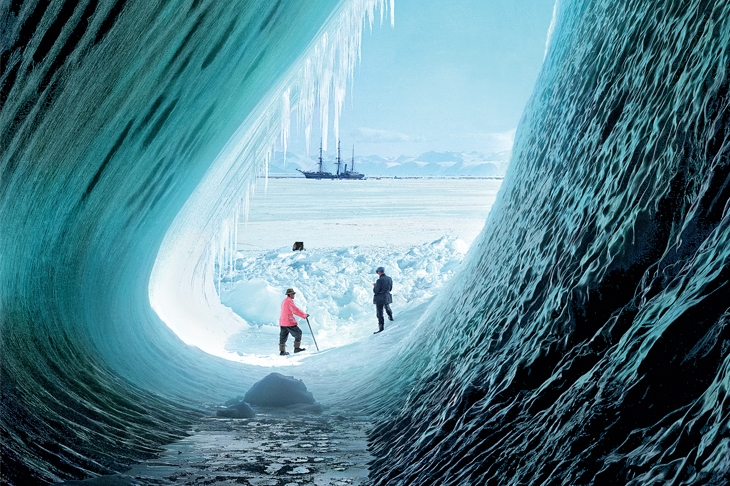There is something of The Wizard of Oz about Marina Amaral’s photographs. She whisks us from black-and-white Kansas to shimmering Technicolor Oz. When Howard Carter leans over Tutankhamun’s open sarcophagus (1922), he does so in the glare of pharaonic gold. A photograph of fallen American soldiers on the Gettysburg battlefield (1863) shocks the more when we see the colour of the blood soaking through shirts. The Javanese dancers who performed at the Exposition Universelle in Paris (1889) are gorgeous in madder pinks, jades and golds. I’ve seen this picture a dozen times, rolled out to illustrate the influence of ‘exotic’ dancers on artists and choreographers, but I’d never considered that what attracted Rodin and Degas wasn’t just movement and form but colour, glorious colour.
‘My goal,’ says 23-year-old Amaral, ‘is not to replace black-and-white photographs or to do something better than the original photographer. What I try to do is to build a bridge between the present and the past.’ She talks of a failing in the way our minds work. ‘One side of the brain, when we look at a black-and-white photo, understands that the past was as colourful and vivid as our present. But the other side of the brain can’t feel the “essence” of this when we look at the photo.’ No matter how many times you read that Mata Hari was the arch-seductress, the slinkiest, sultriest dancer of the belle époque, you look at black-and-white portraits of Mademoiselle Mata in jewelled, cuffed and gauzed costume and think: how quaint. Worse: she’d have been about my great-great-great-grandmother’s age. When you see Amaral’s coloured portrait, you think: phwoar!
Two hundred of Amaral’s photographs illustrate The Colour of Time: A New History of the World 1850–1960. Dan Jones’s words do the business, but it is Amaral’s photographs that awe. She changes the way we see a period or a person.








Comments
Join the debate for just £1 a month
Be part of the conversation with other Spectator readers by getting your first three months for £3.
UNLOCK ACCESS Just £1 a monthAlready a subscriber? Log in